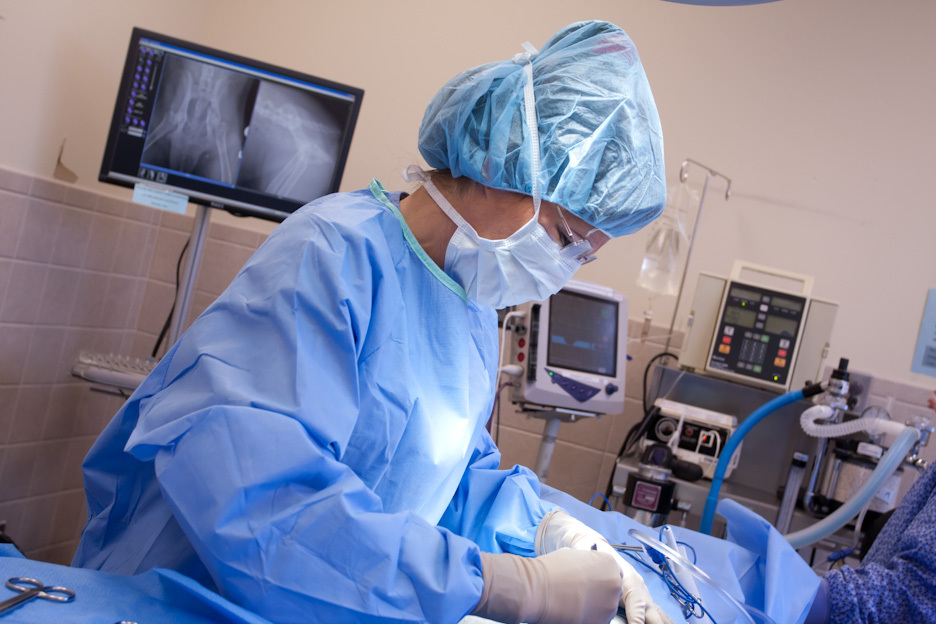Hip Dysplasia at OVRS: Surgeon Dr. Lucy Shields Henney
 No one wants to hear that their pet has hip dysplasia. The term in itself is associated with images of a crippled, debilitated pet. It doesn’t always have to be that way, however. OVRS’s own Dr. Lucy Shields Henney, a board-certified veterinary surgeon, has a special interest in surgical treatments for hip dysplasia and continues to be on the cutting edge of treatment options for affected pets.
No one wants to hear that their pet has hip dysplasia. The term in itself is associated with images of a crippled, debilitated pet. It doesn’t always have to be that way, however. OVRS’s own Dr. Lucy Shields Henney, a board-certified veterinary surgeon, has a special interest in surgical treatments for hip dysplasia and continues to be on the cutting edge of treatment options for affected pets.
What is Hip Dysplasia?
Hip dysplasia occurs when the hip joint has an unstable or loose fit. Certain dogs are born with a predisposition for this. Over time, this laxity results in changes within the joint and eventual pain and lameness. Many dogs can be treated conservatively with medical treatment depending on their age, degree of discomfort, and how severely they are affected.
Treatment
In immature dogs (under 1 year of age) that have loose hip joints but no signs of a problem yet, a technique called a triple pelvic osteotomy may be performed. Dr. Henney was the first surgeon in Michigan to perform this technique and has extensive experience in the area. A pelvic osteotomy involves the surgeon cutting the pelvic bone in three separate places and rotating them to stabilize the hip joint. This successfully slows the progression of osteoarthritis in many patients.
In order for pets to benefit from this procedure, they must be identified as having hip dysplasia before they become uncomfortable. This is done through a screening procedure such as PennHIP radiographs (a special X-ray technique) performed on at-risk patients. Dr. Henney is one of only a handful of veterinarians in the state of Michigan certified to perform this testing procedure.
Senior Pets
In older patients with clinical signs of hip dysplasia, other options are available. Some patients respond very well to medical and physical therapy, while others benefit from other surgical procedures such as a total hip replacement or femoral head ostectomy.
If you have a pet who suffers from hip dysplasia, Dr. Henney and the rest of the surgical team at OVRS would be happy to assess them and make recommendations to help them live a happy, pain-free life.
_________________________________________
Images: OVRS-96.jpg, OVRS-130.jpg



